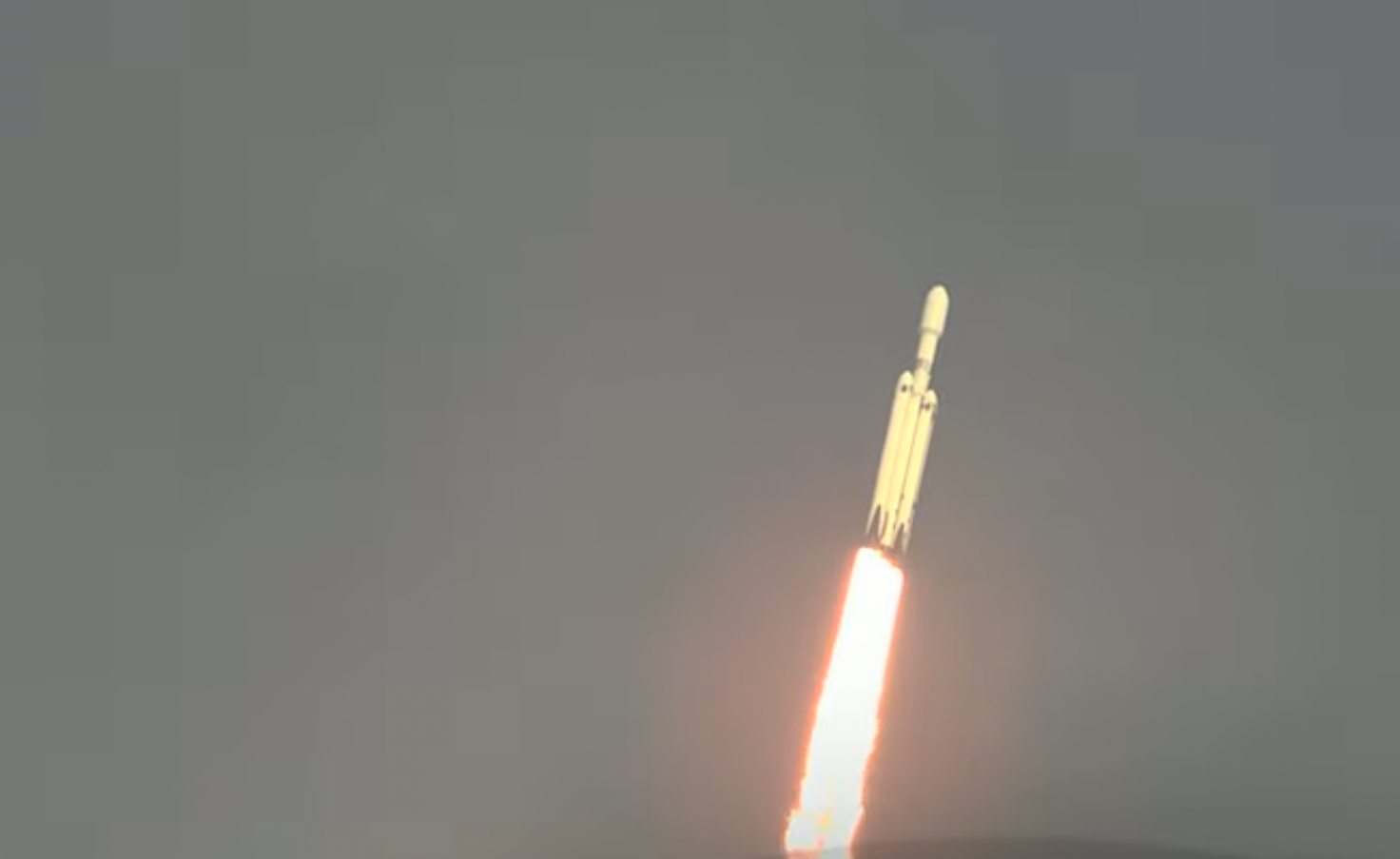SpaceX launches most powerful operational rocket Tuesday morning
A SpaceX Falvon Heavy rocket climbed into the sky for the first time in three years on Tuesday

Your support helps us to tell the story
From reproductive rights to climate change to Big Tech, The Independent is on the ground when the story is developing. Whether it's investigating the financials of Elon Musk's pro-Trump PAC or producing our latest documentary, 'The A Word', which shines a light on the American women fighting for reproductive rights, we know how important it is to parse out the facts from the messaging.
At such a critical moment in US history, we need reporters on the ground. Your donation allows us to keep sending journalists to speak to both sides of the story.
The Independent is trusted by Americans across the entire political spectrum. And unlike many other quality news outlets, we choose not to lock Americans out of our reporting and analysis with paywalls. We believe quality journalism should be available to everyone, paid for by those who can afford it.
Your support makes all the difference.SpaceX successfully launched the world’s most powerful, operational rocket from Nasa’s Kennedy Space Center on Tuesday morning.
Despite heavy fog early in the morning, a SpaceX Falcon Heavy rocket roared off into space from launch complex 39A at 9.41am EDT carrying USSF-44, a classified US Space Force payload destined for geosynchronous orbit. It was the first launch for the Falcon Heavy in three years, and the third launch for the big heavy lift rocket since its debut in 2018, when a Falcon Heavy launched a Tesla roadster into space — SpaceX CEO Elon Musk is also the CEO of the electric car company.
The Falcon Heavy rocket is roughly equivalent to three of SpaceX’s Falcon 9 rockets strapped together to create a wider and more powerful main stage. Where a single Falcon 9 rocket can launch around 20,900 pounds into low Earth orbit, the Falcon Heavy can lift more than 140,000 pounds into low Earth orbit.
Like Falcon 9 rocket boosters, the Falcon Heavy boosters are reusable. Two of the three boosters from Tuesday’s launch piloted themselves back to Earth autonomously, marking the 150th and 151st recovery of orbital class rockets by the company.
While Falcon Heavy launches have been rare, SpaceX has been launching Falcon 9 rockets at a rapid pace, sending astronauts and cargo to the International Space Station, launching SpaceX Starling satellites, and other commercial payloads. Tuesday’s launch makes the 50th rocket launch for SpaceX in 2022 alone.
The Falcon Heavy may not retain the title of most powerful operation rocket for much longer.
Nasa’s Space Launch System (SLS) rocket will be the most powerful rocket to fly since the Saturn V of the 1960s Apollo program if it lifts off from Kennedy Space Center on Monday 14 November as Nasa hopes it will. That launch will carry the Artemis I mission, an uncrewed test flight of the Orion spacecraft that, paired with the SLS, will carry Nasa astronauts back to the Moon in 2025.
The version of the SLS rocket launching Artemis I will generate 8 million pounds of thrust and can carry more than 209,000 pounds into low Earth orbit.
SpaceX, meanwhile, is working to outdo both Nasa and themselves. The company’s Starship spacecraft, still under development, will generate 12 million pounds of thrust when paired with the new Super Heavy Booster, and will lift 200,000 pounds of payload into low Earth orbit.
Starship will be the largest rocket ever flown — if it launches.
Years of technical and regulatory delays led SpaceX to continually push back the date for a first orbital test flight for Starship. In February, Musk was predicting a launch date sometime in March, but by September, he recalibrated, suggesting the flight could come by late October.
Join our commenting forum
Join thought-provoking conversations, follow other Independent readers and see their replies
Comments